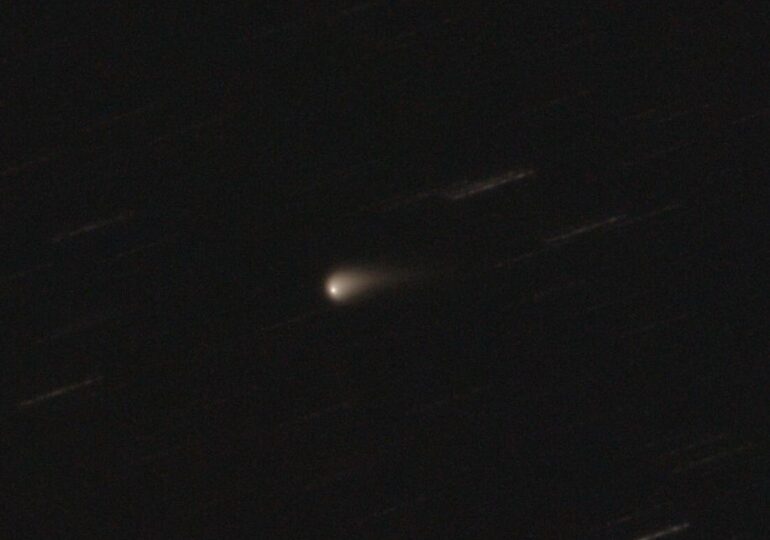A comet named C/2023 A3 (Tsuchinshan-ATLAS) has caught the attention of experts because it is brighter than the stars. They predict that in 2024 the comet will become visible to the naked eye as it becomes even brighter. Currently, it can only be seen through a telescope.
However, as the months pass, the comet will gradually increase in brightness. By October, it is expected to reach its maximum brightness, being visible to the naked eye.
The comet will come closest to the Sun on September 27, at a distance of 58.6 million kilometers, a distance similar to that of the planet Mercury.
Subsequently, on October 12, it will pass closest to Earth, at a distance of 70.6 million kilometers. Experts anticipate that during this period, it will shine the brightest, potentially outshining most stars in the sky and rivaling the brightness of Venus or Jupiter.
Comets are ancient icy bodies formed during the early stages of the creation of the Solar System. Discovered 15 months ago by two observatories, namely the Zijinshan Astronomical Observatory and the Asteroid Terrestrial-impact Last Alert System (ATLAS), C/2023 A3 has a composition of ice and dust.
When comets approach the Sun, the heat causes the ice to vaporize, creating a glowing atmosphere around the nucleus that can be thousands of kilometers wide. This sets comets apart from asteroids and meteorites, which do not undergo this transformation.
Due to its increasing brightness, it is expected that C/2023 A3 will be visible during sunset, providing a spectacular sight for skywatchers around the world. This comet, brighter than the stars, represents a rare opportunity to witness one of the brightest comets observed in history.

